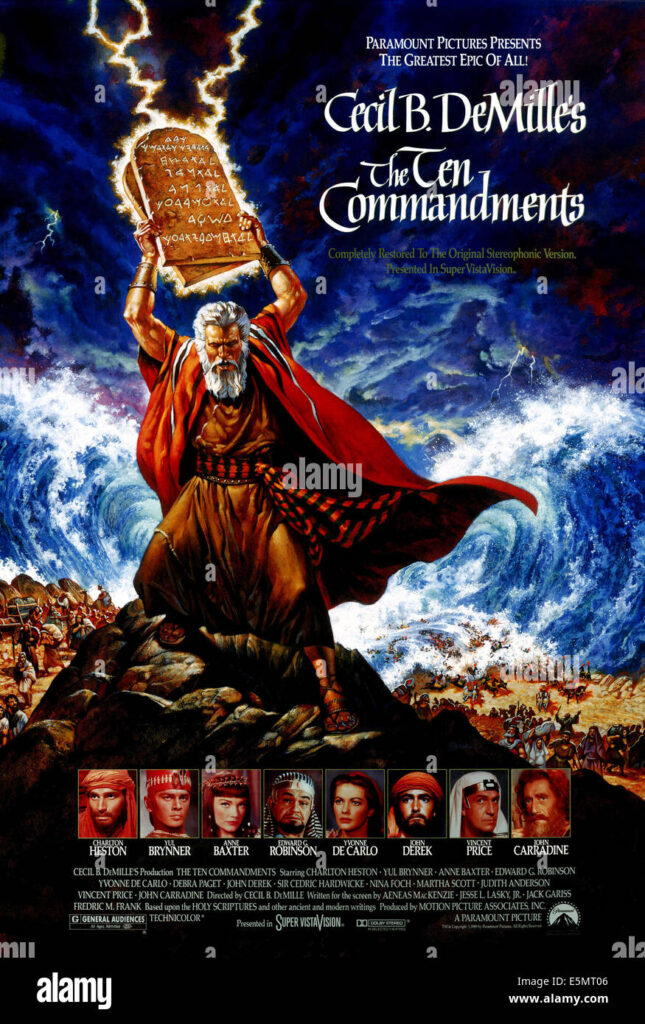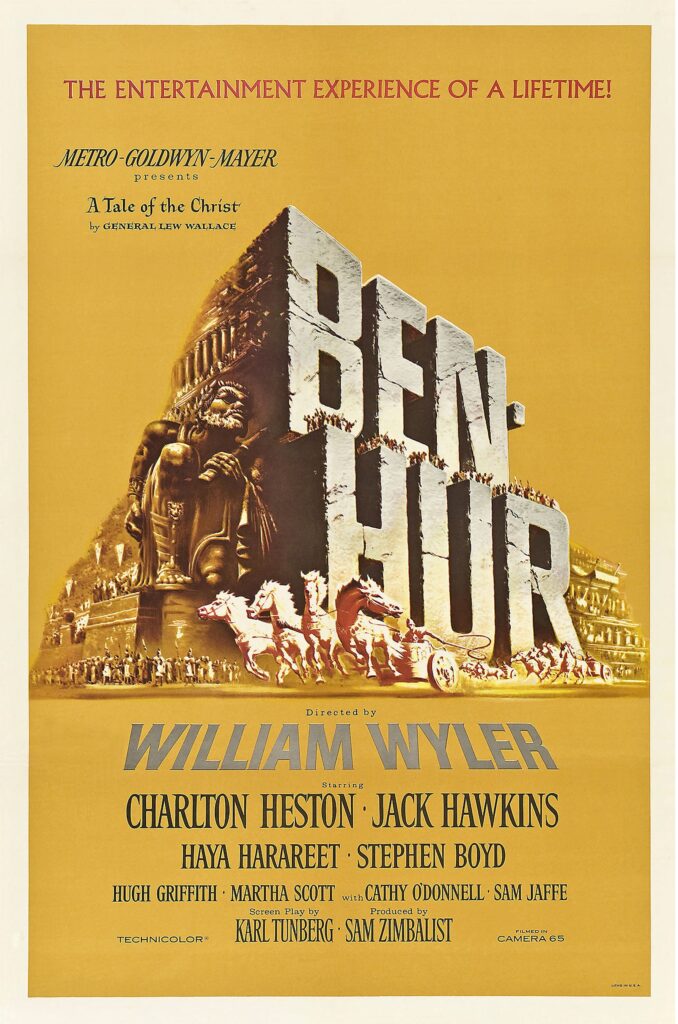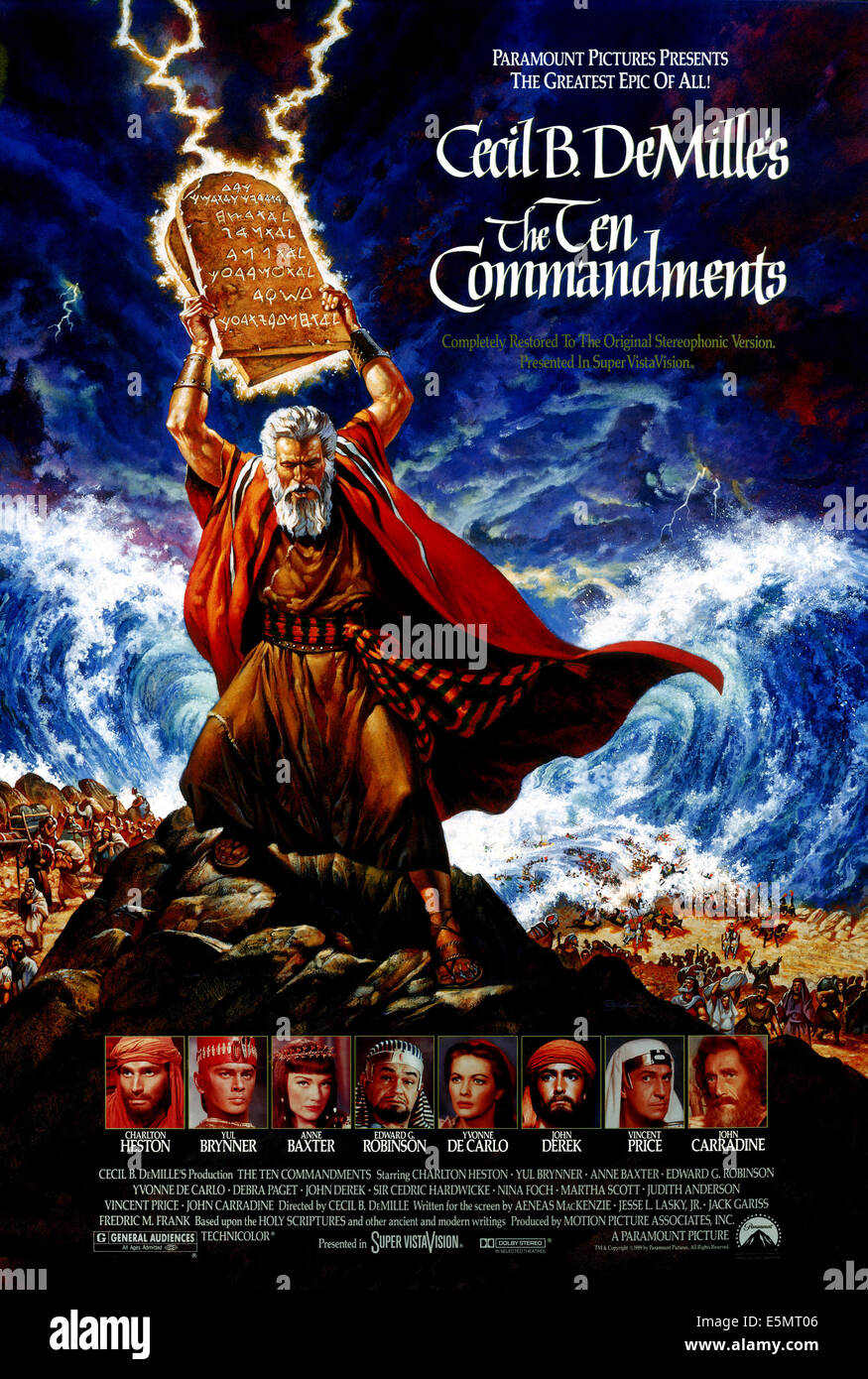
[EDITOR’S NOTE: This is a “Double Feature” post sharing two perspectives on faith via some of the most famous midcentury religious epics.]
Growing up in India, religion was everywhere. At home we practiced Islam, schooling was a Catholic-run school, and temples, mosques, a few churches, and gurdwaras were common sights.
The other thing most common was movies and cinema halls. Movie posters, from Hollywood to Indian ones to regional ones were everywhere we turned around. Most of my early memories are related to movies because of my enthusiastic movie-buff parents.
The film industry seems to have an obsession with religion. Many Bollywood films have an underlying theme of good fighting evil and, in most cases, winning over it. A line or two from Gita or Sufi saints is common. Hollywood sometimes tries to incorporate flavors of different religions. Take the recent Oscar winner Everything Everywhere All At Once—not only is the title based on Buddha’s saying, it encompasses much of Eastern philosophy. Iconic pop-culture Sci-Fi movies such as The Matrix or Dune have strong messianic flavors. Neo being asked to choose between the blue pill and the red pill is a classic crossroads choice in many religious traditions. Or it could be that contemporary classic stories bear the influence of Joseph Campbell’s Hero with a Thousand Faces, the most famous of which is the Star Wars franchise. Stilgar, the Freemen leader in Dune refers to Jessica as Sayyidina, the Arabic word for friend of God, and Bene-gesserit practices weirding fighting using the prana-bindu (sanskrit for mind-body connection). Al-ghayb, used all over in Dune, is the unseen—a common Arabic reference to God and the knowledge that God has.
My first realization of how closely we Muslims were related to Jews and Christians, was the movie The Ten Commandments with Charlton Heston. I knew the story in detail except for minor variations—a story taught not at my school but by my Arabic teacher who taught us how to read Quran at home. The same goes for Jesus. Even though I studied at a Catholic school, I had more context of Isa (as he is known in the Quran), son of Maryam, from listening to stories from my maulvi teacher.
Moses is mentioned more than 130 times in the Quran, more than any other person except for Prophet Mohammed. He is described as a prophet who was sent to guide the Israelites out of slavery to the straight path and to warn them of the consequences of disobeying God’s commandments. Muslims believe that Moses was given the Torah, which is considered a holy scripture in Islam. In addition to his prophethood, Moses is also revered in Islam for his courage and his steadfastness in the face of adversity. He is every the bit the hero from the movie, except that he is not a good orator and thus God gets his brother, Aaron, to help with that. Even Moses’ foster mother, the wife of the Pharaoh, is presented as a role model for Muslim women and her faith and righteousness are praised as an example for all believers.
Abraham, the father for the three major monotheistic faiths and the fountainhead is mentioned in the Quran close to 70 times. Abraham is revered in Islam as the original iconoclast for his unwavering faith and devotion to God. Muslims believe that he built the Kaaba in Mecca, which is considered the holiest site in Islam. The Hajj pilgrimage, one of the Five Pillars of Islam, involves circumambulating it. Abraham is also considered a role model for Muslims for his generosity and ability to help those in need.
Among women, to the surprise of many, Mary, the mother of Jesus, is considered to be the most mentioned woman in the Quran. Her name is mentioned 34 times and her story is a prominent feature of the Quranic narrative. Mary is revered in Islam as a paragon of piety, devotion, and purity. Her story emphasizes the importance of submitting to God’s will and trusting in His plan.
Mary’s immaculate-born son, Jesus, is mentioned more than 25 times and plays a central role throughout: the Quran describes several miracles performed by Jesus, including healing the blind and the leper, and raising the dead. However, the Quran emphasizes that these miracles were performed by the permission of God, and not by Jesus’ own power. The Quran differs from the Christian belief in that it does not consider Jesus to be the son of God, but rather a prophet and messenger of God. The Quran also rejects the Christian belief in the Trinity, which states that God is composed of three persons: the Father, the Son, and the Holy Spirit. Muslims believe that Jesus was not crucified, but was raised to heaven by God. This event is known as the Ascension of Jesus. In Islam, he is also believed to play a role in the end times, when he will return to earth and defeat the Antichrist.
With Passover, Easter and Ramadan coinciding this year it is a great time to celebrate the commonalities of the three Abrahamic traditions, to reflect upon our faith, and learn from each other—even through movies.
Watching Casts of Thousands on Easter Sunday

By Melanie P. Moore
I spent every Easter Sunday in church as a kid, then not in church as a young adult, now sometimes in church but always watching religious epics. I started watching them with my wife, who is Jewish, and who introduced me to the “Charlton Heston School of Over-Acting.” She’s a Star-Trek fan as well and says William Shatner graduated from the Heston school. But I digress. On Easter Sunday, we binge-watch Ben-Hur, The Ten Commandments, The Robe, and whatever else Turner Classic Movies offers up from “Hollywood’s Golden Era” of the 1950s.
An old friend of mine refers to holiday church services as “Amateur Night.” My friend used it self-deprecatingly in reference to herself and her siblings who joined their mom once a year for services at the Catholic church where they grew up. I’ve used it glibly ever since, referencing the “cast of thousands” who come on holidays but not regularly. I slapped a label on “them.” To be fair, congregations swell on holidays in many cases because families have traveled to visit each other and go to church together. I thought Amateur Night was hilarious. I should know because as a young adult I only attended services when I was visiting my parents, until I stopped visiting, and then stopped going to church at all. I stayed out of the church for ten years after coming out as a lesbian because the United Methodist Church (where I grew up as a preacher’s kid in South Georgia) states in the Book of Discipline that “Homosexuality is incompatible with Christian teaching.” I responded to rejection with rejection. I allowed a label to stick to me and, tit for tat, continued to label others.
Labels, like blanket statements, shut down debate while authentic conversation allows a topic—and people—to stay open, something especially difficult when the topic (and the people) are confusing and troublesome. Labels in hand, I felt rejected but I wasn’t sad. I was indignant. And I was not willing or able to be vulnerable enough to participate in any sort of authentic or reconciling conversation. I had differentiated myself and was working very hard to attain expertise, to be smarter and better informed than the “sheep” I labeled church goers to be. It was years before I stumbled upon an Erasmus quote that still helps me: “I put up with this church, in the hope that one day it will become better, just as it is constrained to put up with me in the hope that I will become better.”
In Austin, I found a home at St. David’s Episcopal Church where I didn’t have to feel defensive or hide part of myself—to “pass” as straight—for acceptance. Once involved at St. David’s, my spiritual growth, as with any activity, infused itself into my conversations. And that’s when I noticed what still, 20 years later, is a pernicious and pervasive phenomenon: It’s easier (I find more acceptance) when I come out to my Christian friends as a lesbian than when I come out to my LGBTQ+ friends as a Christian.
Slapping a label on people or an experience is easier and more expedient than it is to open myself, my wounds, to a confusing and troublesome dialog. I grew up in the Methodist Church in small-town South Georgia with no personal experience of any faith differences other than a plethora of Protestant churches. Yet we labelled each other within the Protestant realm—sometimes affectionately, sometimes with an edge, but always with the point of differentiating ourselves one from the other, separating not just from non-church-goers (Heathans!) but from each other. Labels made us feel safe in our tiny congregations. Labels still work for me more often than I’d like to admit. Similarly, my LGBTQ+ friends who escaped the churches that hurt them have also circled the wagons and labeled us pejoratively as Christians. I know because I did the same in those years I was out of the church. From the rural churches of my childhood to my downtown Episcopal church in Austin, as Christians in America, even if we realize it, it’s easy to forget we ARE the Empire, we are the Rome of Ben-Hur. Our current conformity and persecution take the forms of legislation, online bullying, mass shootings, synagogue and mosque burnings—all arguably manifestations of Quintus Arrius’s famous line from the movie “Hate keeps a man alive.”
I approach this, my fifty-eighth Easter on the planet in a quest for unity and hope, with the profound sense that we are ALL amateurs. My Buddhist friends tell me it’s important to cultivate “Beginner’s Mind.” Apple TV’s Ted Lasso urges his players to stay present to the current moment, saying “Be a goldfish,” the creature with a 10-second memory. I will do my best to watch Ben-Hur—and move through the world—with both presence and Beginner’s Mind, enthusiastically embracing my amateur status as a person of faith.


4 Responses
The two pieces together help me welcome complexity this spring in the face of my own desire to “simplify” with labels. The goldfish reference reminded me of this Mark Nepo quote: “….Ultimately,
we are small living things
awakened in the stream,
not gods who carve out rivers….”
Thanks Janet. That is a GREAT quote from Mark Nepo. Grateful for the addition of it to this “Double Feature” post!
Thank you Melanie for sharing your rejection experience with the church. I’m reminded again to practice welcoming, yes, even to those folks who turn up at Easter never to be seen again.
Thank you Diane for reading and responding! Always interested in your thoughts.